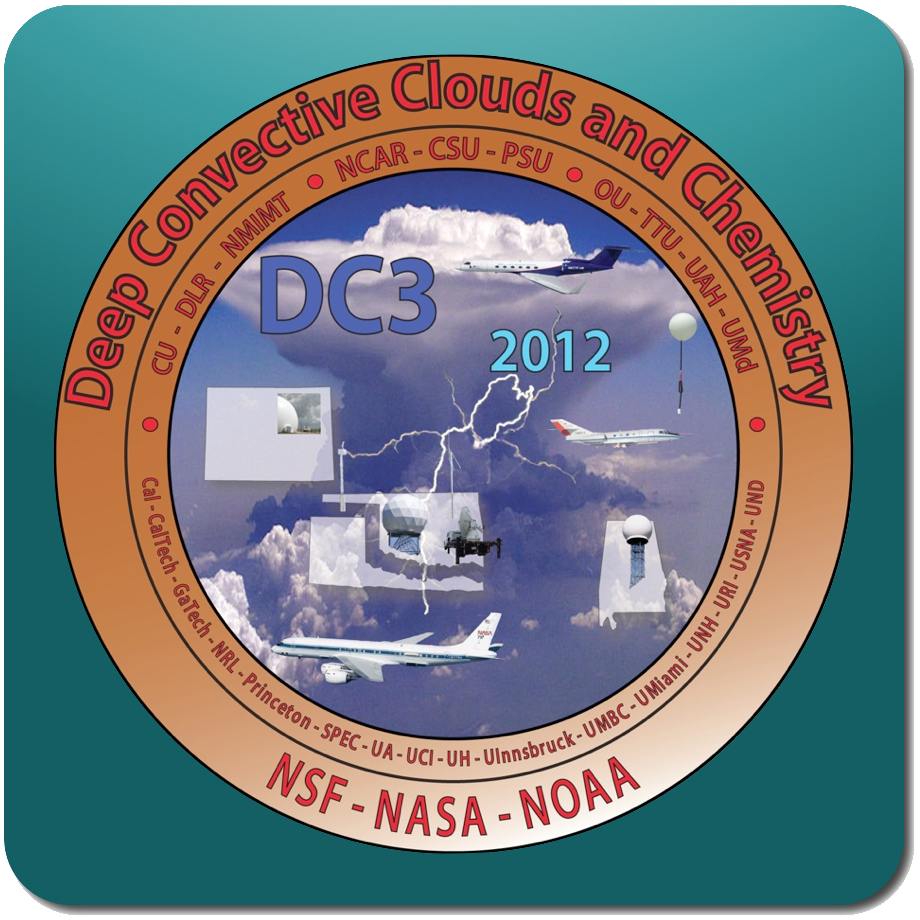The DC3 field project makes use of two instrumented aircraft platforms and ground based observations to characterize the impact of deep convective systems on the composition and chemistry of the mid latitude troposphere and lower stratosphere. The observations are conducted in three locations -- northeastern Colorado, central Oklahoma and northern Alabama -- in order to gather data on different types of storms with different boundary layer compositions and convective environments, and to improve the odds for suitable storms for the study. Significant ground based observations infrastructure already exists in these areas. The infrastructure will be used to characterize the physical and dynamical characteristics of the storms, and to provide information used to guide the research aircraft as storms evolve.
Specifically, the DC3 field program intends to:
- Quantify and characterize the convective transport of fresh emissions and water vapor to the upper troposphere within a few hours of active convection, investigating storm dynamics and physics, lightning and its production of nitrogen oxides, cloud hydrometeor effects on scavenging of species, surface emission variability, and chemistry in the anvil.
- Quantify the changes in chemistry and composition in the upper troposphere (UT) after active convection, focusing on the 12-48 hours after convection and the seasonal transition of the chemical composition of the UT.
DC-3 will use observations from a variety of platforms to improve the understanding at the process level. The results are intended to allow for testing and improvements of parameterization schemes in large-scale models. By conducting observations in Colorado, Oklahoma and Alabama, DC3 will investigate the differences resulting from high-cloud base storms, super-cell storms and subtropical air mass thunderstorms. The general target will be isolated deep convective clouds. The aircraft observations will be combined with ground-based radars, lightning networks and sounding systems to further characterize the storms and their environments.
DC3 will include use of the NASA DC-8. In addition DC3 may include several other aircraft, e.g., a storm-penetrating A-10 aircraft, all TBD.
A project of this size will require a major operations planning effort to develop and implement efficient operational strategies and procedures, coordination with Air Traffic authorities, provision of information to/from the aircraft and ground bases during operations. The project will also significantly benefit from a comprehensive data management strategy.
Data Set Documentation Guidelines
Data Submission Instructions
DC3 Data Policy - Final
DC3 Education & Outreach Page
6 Quick Questions
Platforms & Instruments
Science Team
Educational Resources
DC3 In the News
DC3 Blog
DC3 Teacher's Workshop
Outreach Calendar
DC3 EO Summary Report
NCAR ACOM (formerly ACD) DC3 Page
NASA SEAC4RS Project Website
Toolsets for Airborne Data (TAD)
ARM Facilities Website
NASA Lidar Applications Group
Logos




